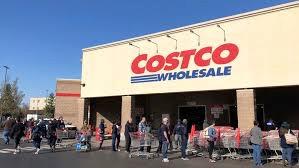 Scott Moses of investment group P.J. Solomon recently reviewed the relative growth of alternatives to conventional supermarkets in a June 22nd edition of Supermarket News. Between 2010 and 2020, traditional supermarkets declined by 900 to a total 26,065. Gains achieved by non-traditional food retailers included:-
Scott Moses of investment group P.J. Solomon recently reviewed the relative growth of alternatives to conventional supermarkets in a June 22nd edition of Supermarket News. Between 2010 and 2020, traditional supermarkets declined by 900 to a total 26,065. Gains achieved by non-traditional food retailers included:-
- Convenience stores selling groceries increased by five percent to 153,405 locations. It is noted that over the last two year and especially during COVID restrictions, convenience stores stocked a greater volume of food items.
- Drug stores selling food increased by 10 percent to a total of 21,465 locations.
- Club stores including Sam’s, Costco and BJ’s increased in number by 13 percent to 1,378.
- Supercenters including Walmart, Meijer and Target grew by 18 percent to 5,723 locations.
- Discount supermarkets including Aldi, Trader Joe’s, Lidl and Save-a-Lot increased by 61 percent to 3,860 stores.
- Dollar stores increased by 62 percent to 32,721 locations with a high proportion now selling food items including fresh produce
- Natural and gourmet supermarkets including Whole Foods grew by 133 percent to 1,018 stores.
In 2021, consumers used as many as four channels to purchase their weekly food requirements including online, pickup, home delivery and personal shopping. Loyalty to a specific chain has declined with consumers purchasing at 4.9 banners within a week.

During the past ten years there has been considerable consolidation among supermarkets with Walmart representing 25 percent of grocery purchases and attaining 50 percent market share in over 200 markets and attaining grocery sales equivalent to Kroger, Albertsons and Ahold- Delhaize combined. Among the ten top grocers not classified as traditional supermarkets Costco is ranked # 3, Amazon #6, Target #7 with Dollar General attaining tenth rank.
The impact of club stores is indicated by sales achieved by Costco. The average warehouse location achieves a revenue of $2.5 million per week for groceries representing three times the value generated by a traditional supermarket.
In coming years, traditional supermarkets will continue to experience competition from club stores with the Dollar stores, drug stores and discount supermarkets eroding the customer base.